An atlas of the binding specificities of transcription factors in Pseudomonas aeruginosa directs prediction of novel regulators in virulence
- PMID: 33779544
- PMCID: PMC8041468
- DOI: 10.7554/eLife.61885
An atlas of the binding specificities of transcription factors in Pseudomonas aeruginosa directs prediction of novel regulators in virulence
Abstract
A high-throughput systematic evolution of ligands by exponential enrichment assay was applied to 371 putative TFs in Pseudomonas aeruginosa, which resulted in the robust enrichment of 199 unique sequence motifs describing the binding specificities of 182 TFs. By scanning the genome, we predicted in total 33,709 significant interactions between TFs and their target loci, which were more than 11-fold enriched in the intergenic regions but depleted in the gene body regions. To further explore and delineate the physiological and pathogenic roles of TFs in P. aeruginosa, we constructed regulatory networks for nine major virulence-associated pathways and found that 51 TFs were potentially significantly associated with these virulence pathways, 32 of which had not been characterized before, and some were even involved in multiple pathways. These results will significantly facilitate future studies on transcriptional regulation in P. aeruginosa and other relevant pathogens, and accelerate to discover effective treatment and prevention strategies for the associated infectious diseases.
Keywords: Pseudomonas aeruginosa; dna binding specificity; gene expression; genetics; genomics; infectious disease; microbiology; transcription factors; transcriptional regulation network; virulence.
© 2021, Wang et al.
Conflict of interest statement
TW, WS, LF, CH, NW, SF, JZ, XD, JY No competing interests declared
Figures

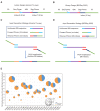

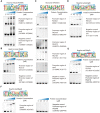
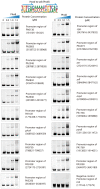





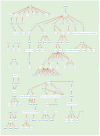
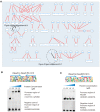
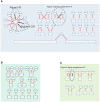











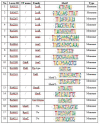

Similar articles
-
An integrated genomic regulatory network of virulence-related transcriptional factors in Pseudomonas aeruginosa.Nat Commun. 2019 Jul 3;10(1):2931. doi: 10.1038/s41467-019-10778-w. Nat Commun. 2019. PMID: 31270321 Free PMC article.
-
Mutation analysis of the Pseudomonas aeruginosa mvfR and pqsABCDE gene promoters demonstrates complex quorum-sensing circuitry.Microbiology (Reading). 2006 Jun;152(Pt 6):1679-1686. doi: 10.1099/mic.0.28605-0. Microbiology (Reading). 2006. PMID: 16735731
-
Functional genomics of PycR, a LysR family transcriptional regulator essential for maintenance of Pseudomonas aeruginosa in the rat lung.Microbiology (Reading). 2008 Jul;154(Pt 7):2106-2118. doi: 10.1099/mic.0.2007/011239-0. Microbiology (Reading). 2008. PMID: 18599838
-
[Molecular determinants in regulating Pseudomonas aeruginosa type III secretion system--a review].Wei Sheng Wu Xue Bao. 2008 Oct;48(10):1413-7. Wei Sheng Wu Xue Bao. 2008. PMID: 19160828 Review. Chinese.
-
A dynamic and intricate regulatory network determines Pseudomonas aeruginosa virulence.Nucleic Acids Res. 2013 Jan 7;41(1):1-20. doi: 10.1093/nar/gks1039. Epub 2012 Nov 11. Nucleic Acids Res. 2013. PMID: 23143271 Free PMC article. Review.
Cited by
-
Competition between Pseudomonas aeruginosa and Staphylococcus aureus is dependent on intercellular signaling and regulated by the NtrBC two-component system.Sci Rep. 2022 May 30;12(1):9027. doi: 10.1038/s41598-022-12650-2. Sci Rep. 2022. PMID: 35637237 Free PMC article.
-
Exploring aggregation genes in a P. aeruginosa chronic infection model.J Bacteriol. 2025 Jan 31;207(1):e0042924. doi: 10.1128/jb.00429-24. Epub 2024 Dec 11. J Bacteriol. 2025. PMID: 39660900 Free PMC article.
-
Determination of the two-component systems regulatory network reveals core and accessory regulations across Pseudomonas aeruginosa lineages.Nucleic Acids Res. 2021 Nov 18;49(20):11476-11490. doi: 10.1093/nar/gkab928. Nucleic Acids Res. 2021. PMID: 34718721 Free PMC article.
-
The histidine kinase NahK regulates pyocyanin production through the PQS system.J Bacteriol. 2024 Jan 25;206(1):e0027623. doi: 10.1128/jb.00276-23. Epub 2024 Jan 3. J Bacteriol. 2024. PMID: 38169296 Free PMC article.
-
Structure and function of bacterial transcription regulators of the SorC family.Transcription. 2024 Jun-Oct;15(3-5):139-160. doi: 10.1080/21541264.2024.2387895. Epub 2024 Sep 3. Transcription. 2024. PMID: 39223991 Free PMC article. Review.
References
-
- Baraquet C, Murakami K, Parsek MR, Harwood CS. The FleQ protein from Pseudomonas aeruginosa functions as both a repressor and an activator to control gene expression from the pel operon promoter in response to c-di-GMP. Nucleic Acids Research. 2012;40:7207–7218. doi: 10.1093/nar/gks384. - DOI - PMC - PubMed
Publication types
MeSH terms
Substances
Associated data
- Actions
- Actions
Grants and funding
- 8187364/National Natural Science Foundation of China
- 7005314/City University of Hong Kong
- 31900443/National Natural Science Foundation of China
- 31870116/National Natural Science Foundation of China
- 21103018/Research Grants Council, University Grants Committee
- 21100420/Research Grants Council, University Grants Committee
- 11101619/Research Grants Council, University Grants Committee
- 2019M663799/China Postdoctoral Science Foundation
- 2019M663794/China Postdoctoral Science Foundation
- 9667188/City University of Hong Kong
- 32070596/National Natural Science Foundation of China
- 9610424/City University of Hong Kong
LinkOut - more resources
Full Text Sources
Other Literature Sources
Molecular Biology Databases

